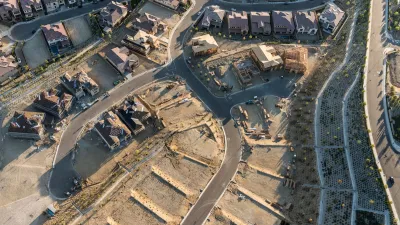Rives Taylor pens an editorial for Urban Land advocating for "engineered resilience", which he describes as "next-generation sustainability" that "adds adaptability and the protection of human life" to planning for the well-being of the planet.
Taylor, a principal at Gensler, dives into the growing discussion over the concept of resilience amongst those in the planning and development community. He sees engineered resilience as the logical progression of sustainability to embrace, "climate uncertainty, predicted rises in sea level, and terrorism (all of
which have exposed deep vulnerabilities in our built environment and
infrastructure), as well as something exquisitely calculable: risk
management."
In his practice orchestrating sustainability and resilience planning for clients around the world, Taylor finds that "sustainability is morphing into resilience," with "companies
often redirecting their 'greening' costs to a broader program of
resilience." He regards the greatest challenge to those assisting clients with designing, developing, and operating redundant buildings, "is to keep resilience human, stopping well short of creating buildings and campuses that look and live like bomb shelters."
"That is exactly how engineered resilience should be approached-not by an
obvious 'hardening' and dehumanizing of a building, but by designing it
to be flexible and adaptable when put under stress," writes Taylor. "That is largely
done by designing multiple redundancies (also known as diversity) into
its critical systems for power and water, into a smart envelope, into
the site design, and into the building's connection to the community. If
one system or approach fails, another is designed to kick in, and
potentially another after that, as part of a well-choreographed response
to trouble-like a boxer bobbing and weaving to avoid a punch and remain
standing."
FULL STORY: Land Writes: Engineered Resilience

Alabama: Trump Terminates Settlements for Black Communities Harmed By Raw Sewage
Trump deemed the landmark civil rights agreement “illegal DEI and environmental justice policy.”

Planetizen Federal Action Tracker
A weekly monitor of how Trump’s orders and actions are impacting planners and planning in America.

The 120 Year Old Tiny Home Villages That Sheltered San Francisco’s Earthquake Refugees
More than a century ago, San Francisco mobilized to house thousands of residents displaced by the 1906 earthquake. Could their strategy offer a model for the present?

Ken Jennings Launches Transit Web Series
The Jeopardy champ wants you to ride public transit.

BLM To Rescind Public Lands Rule
The change will downgrade conservation, once again putting federal land at risk for mining and other extractive uses.

Indy Neighborhood Group Builds Temporary Multi-Use Path
Community members, aided in part by funding from the city, repurposed a vehicle lane to create a protected bike and pedestrian path for the summer season.
Urban Design for Planners 1: Software Tools
This six-course series explores essential urban design concepts using open source software and equips planners with the tools they need to participate fully in the urban design process.
Planning for Universal Design
Learn the tools for implementing Universal Design in planning regulations.
Clanton & Associates, Inc.
Jessamine County Fiscal Court
Institute for Housing and Urban Development Studies (IHS)
City of Grandview
Harvard GSD Executive Education
Toledo-Lucas County Plan Commissions
Salt Lake City
NYU Wagner Graduate School of Public Service





























